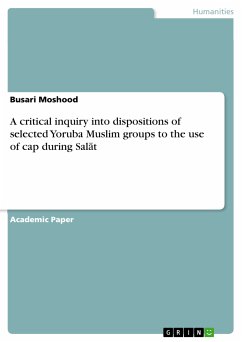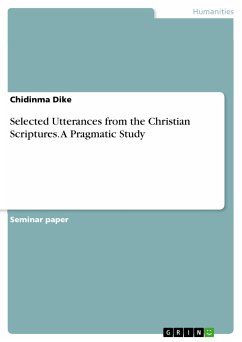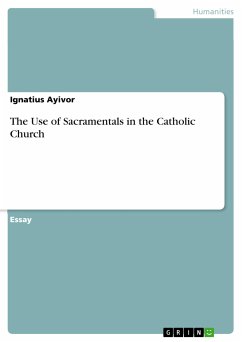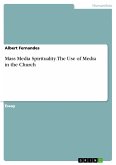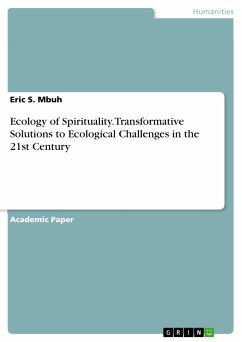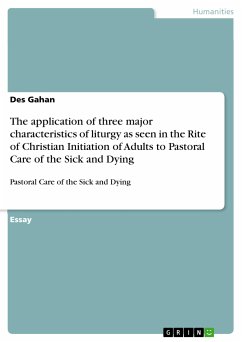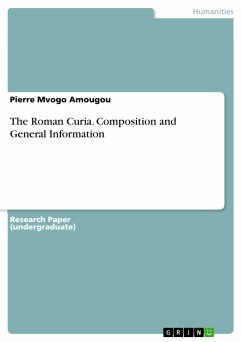Academic Paper from the year 2022 in the subject Theology - Miscellaneous, grade: 6.0, , course: ARABIC AND ISLAMIC STUDIES, language: English, abstract: Controversies over religious issues are not only interdenominational as they can also be intra-faith. These arise from concepts and matters that are crucial to better understanding of a particular religion and effective discharge of one’s obligations as an adherent of such a religion. Such issues which abound in Islam include those on religious identifiers such as the cap and the Hijāb. A lot has been written on the Ḥijāb, Niqāb and Khimār as an identifier of a female Muslim without giving attention to the cap which is identified with her male counterpart. This study therefore probed into controversies expressed by some selected Yoruba Muslim groups on the use of cap during Ṣalāt. This is with a view to ascertaining the right perspective of Islam on the position of cap in Ṣalāt. The study employed purposive sampling technique in selecting thirteen (13) scholars for interviews from six out of the eight sampled Muslim groups which are the Tijāniyyah, the Qādiriyyah, the Muslim Students’ Society of Nigeria (MSSN), the Muslim Congress (TMC), Tacāwunul- Muslimīn , the Tablīgh Brotherhood, the Izālah and the Zumrah. Also, two thousand four hundred and seventy (2,470) members of these eight groups were randomly sampled as questionnaire respondents. The data generated from the respondents’ responses was analysed in Chi square and simple percentages using SPSS while their views were critically examined using the Qur’ān and Sunnah. In spite of inter-group differences noticed in the expressed views, there were also intra-denominational disagreements which point to the elasticity and flexibility of Islamic Jurisprudence on non-fundamental issues (furūc ) Such as this. As such, differences in the juristic views expressed on the use of the cap during Ṣalāt should be utilized by Muslims to facilitate better understanding of Islam on them rather than allowing it to breed disunity and disharmony , considering the fact that the head is not the part of the ‘awrah which must be covered by a male worshipper in Ṣalāt.
